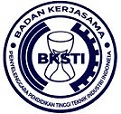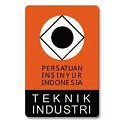Application of SPC and FMEA Methods to Reduce the Level of Hollow Product Defects
Abstract
PT. Surya Baja Pipa Indonesia (SBPI) is a manufacturing company that produces hollow and pipe from rolled iron plate. The production data showed that during January up to October 2021 there were still defects products with the percentage greater than 5%, the specified tolerance limit for defects. In order to maintain quality and increase production efficiency, PT. SBPI strives to reduce the defect rate. This study aims to reduce the level of defect by using Statistical Process Control methods and the Failure Mode and Effects Analysis (FMEA) method to analyze the level of the worst defects by finding the highest damage value Risk Priority Number (RPN). Histogram showed that the biggest defect occurs in welding (7,51%). Analysis using Fishbone diagram found that the welding defect mostly occur due to human factor/workers, machines, methods, materials, and the environment. The result of FMEA method analysis showed machine setting had the highest RPN and became the first priority to solve. It happened because there is no SOP yet that contains definite engine parameters, such as engine speed and voltage. Based on these results, this study suggests companies to prepare SOPs to be a guide for operators at work.
Full Text:
PDFDOI: http://dx.doi.org/10.24014/jti.v8i1.16681
Refbacks
- There are currently no refbacks.
Copyright (c) 2022 Cicilia Sriliasta Bangun

This work is licensed under a Creative Commons Attribution-NonCommercial-ShareAlike 4.0 International License.
Jurnal Teknik Industri
P-ISSN 2460-898X | E-ISSN 2714-6235
Published by:
Industrial Engineering Department
Universitas Islam Negeri Sultan Syarif Kasim Riau, Indonesia
Office Address:
H.R. Soebrantas KM 15.5, Tampan, Pekanbaru, Riau, Indonesia 28293
email: jti.fst@uin-suska.ac.id
Indexed by:
JTI : Jurnal Teknik Industri under a Creative Commons Attribution-NonCommercial-ShareAlike 4.0 International License.

















